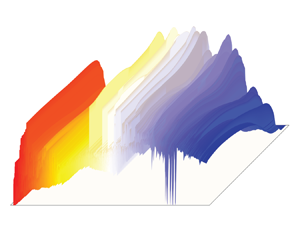Article contents
Numerical study on the non-equilibrium characteristics of high-speed atmospheric re-entry flow and radiation of aircraft based on fully coupled model
Published online by Cambridge University Press: 21 December 2023
Abstract

The strong coupling interactions of non-equilibrium flow, microscopic particle collisions and radiative transitions within the shock layer of hypersonic atmospheric re-entry vehicles makes accurate prediction of the aerothermodynamics challenging. Therefore, in this study a self-consistent non-equilibrium flow, collisional–radiative reactions and radiative transfer fully coupled model are established to study the non-equilibrium characteristics of the flow field and radiation of vehicle atmospheric re-entry. The comparison of the present calculation results with flight data of FIRE II and previous results in the literature shows a reasonable agreement. The thermal, chemical and excited energy level non-equilibrium phenomena are obtained and analysed for the different FIRE II trajectory points, which form the critical basis for studying the heat transfer and radiation. The non-equilibrium distribution of excited energy levels significantly exists in the post-shock and near-wall regions due to the rapid vibrational dissociation and electronic under-excitation, as well as the wall catalytic reactions. The analysis of stagnation-point heating of FIRE II illustrates that the translational–rotational convection and the dissociation component diffusion play key roles in the aerodynamic heating of the wall region. The spectrally resolved radiative intensity in the entire flow field indicates that the vacuum ultraviolet radiation caused by the high-energy nitrogen atomic spectral lines makes the main contribution to the radiative transfer. Finally, it is found that the non-equilibrium flow–radiation coupling effect can exacerbate the excited energy level non-equilibrium, and further affect the gas radiative properties and radiative transfer. This fully coupled study provides an effective method for reasonable prediction of atmospheric re-entry flow and radiation fields.
JFM classification
- Type
- JFM Papers
- Information
- Copyright
- © The Author(s), 2023. Published by Cambridge University Press
References
- 2
- Cited by



